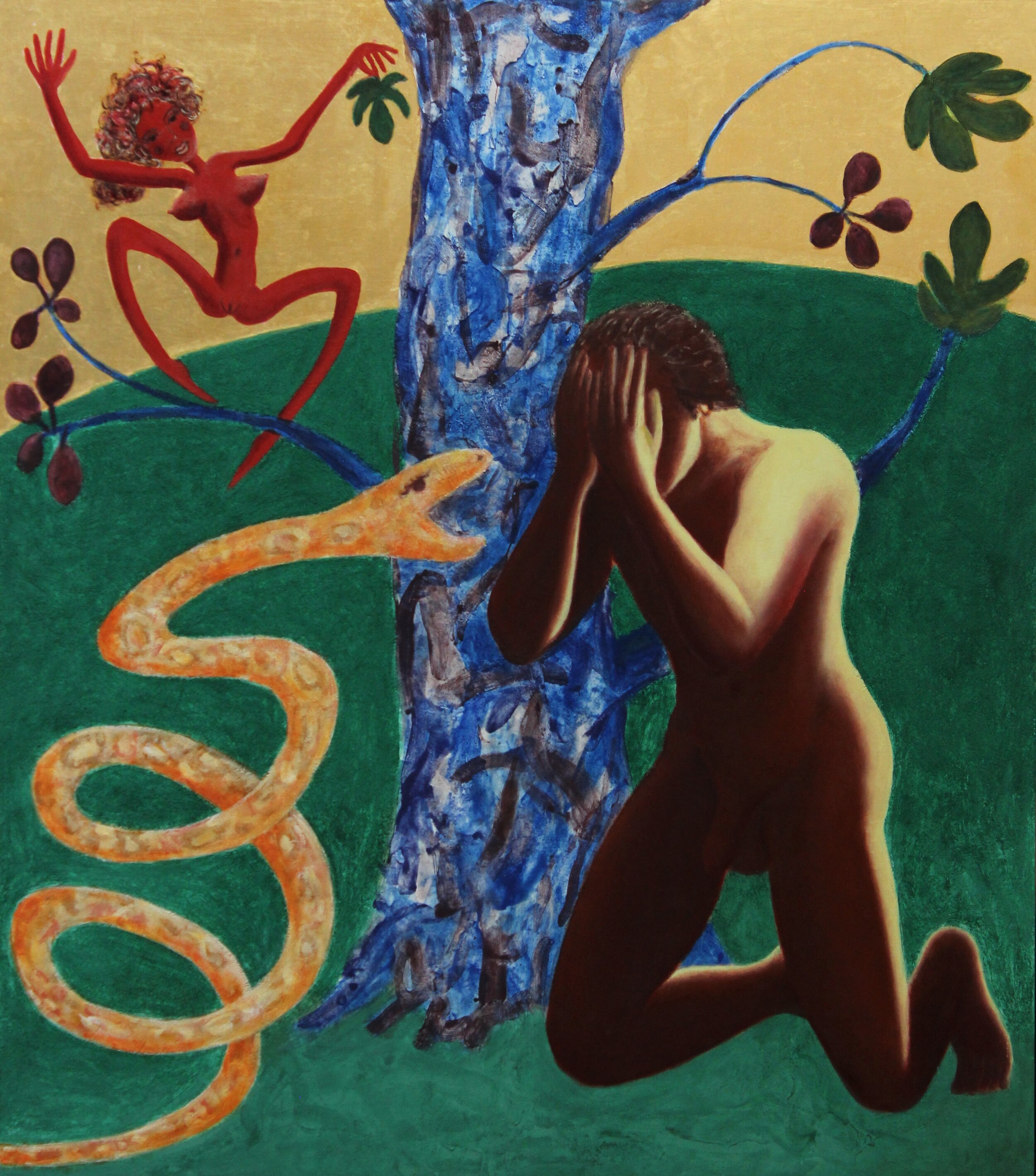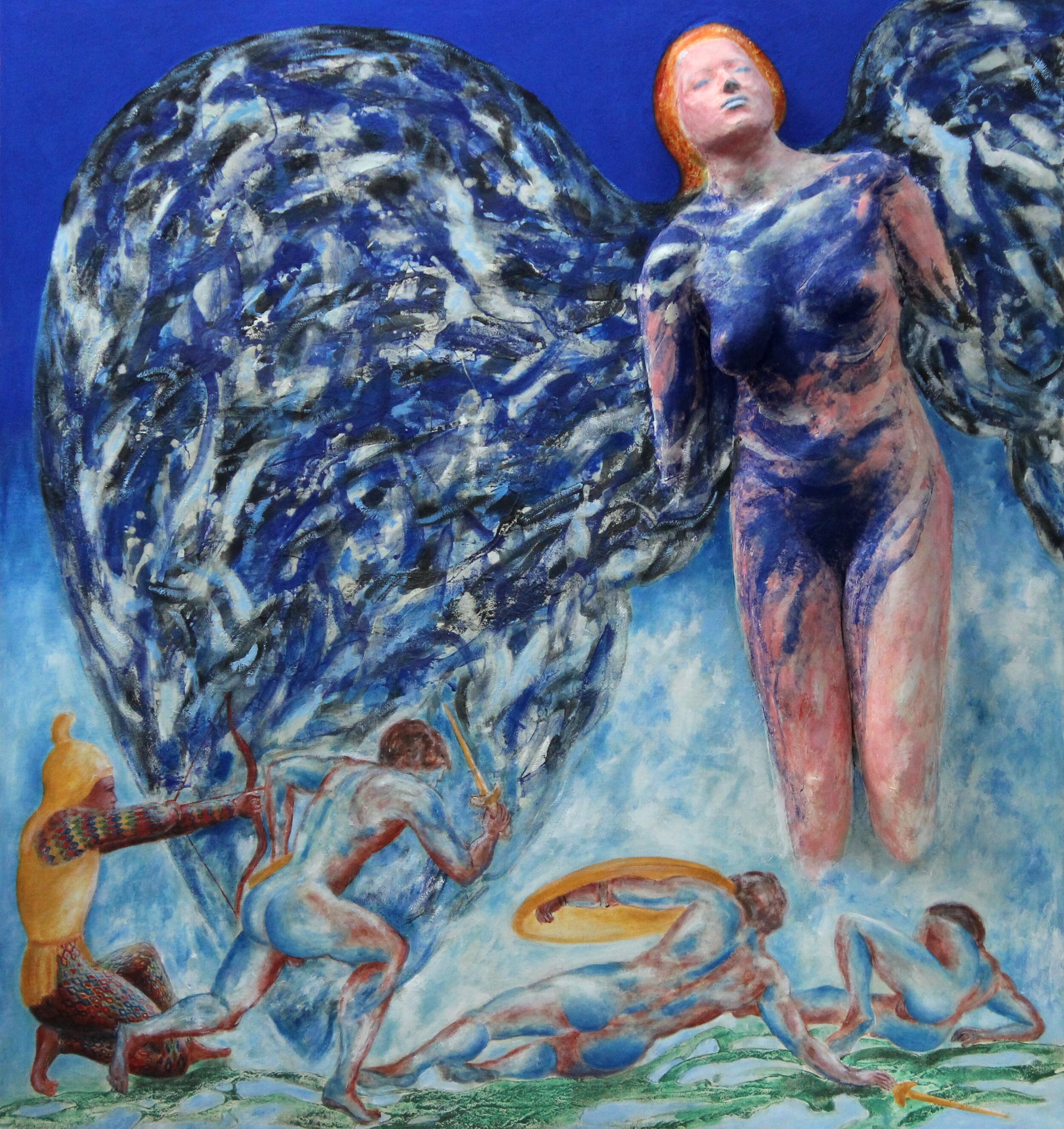Interview
Michael Price
Michael Price is a New York artist working with natural mineral pigments.
The late James Beck, professor of art history at Columbia University in New York, wrote, “Michael Price has restored and preserved for Western culture our Renaissance tradition that depended on artists and their assistants grinding semiprecious stones and mixing them with a variety of binding mediums according to propriety recipes. Time and industrialization has caused Western culture to irretrievably lose these methods of making natural pigments. Michael Price single-handedly mitigated that historic loss.
His rediscovery of the lost historic methods for preparing mineral pigments reopens and represents this medium for artists across the world. As a teacher and professor of Art History to today’s young artists, I am absolutely convinced that Michael’s painting and speaking presence in the United States will signify a reawakening of that tradition.”
Please tell us about your background and how you started your journey in the art world?
“At the age of 15, I won a national art competition, the British Trades Alphabet, with two industrial landscapes. This gave me the confidence to pursue my dream of becoming an artist. In the mid-1970’s, after my graduation from the London Central School of Art (now Central St. Martins), I decided to become an independent artist rather than trying to find a part-time teaching position in a London art school.
Abandoning abstract painting, I found my path as a figurative painter and set out to study the works of the great masters of the Renaissance. In 1976, I moved to Holland to study works by northern European Renaissance artists, and a year later I settled in Munich where I lived for over 20 years before moving to New York in 1999.”
What inspires you as an artist?
“Undoubtedly the human figure, but also studying paintings in museums as well as Greek sculpture. I have spent many years drawing from the life model, both male and female, and each time I am amazed by how unlimited ‘beauty’ can be!”
“The majority of my paintings are poetic narratives. This transcends simple story telling; a narrative bridges the imagination and personal experience.”
What themes do you pursue? Is there an underlying message in your work?
“Over the years, I have pursued themes that relate to the human condition in all its variations - from the historical, to contemporary social issues that have tended to dominate my view of the world. I find that myths and religious mythology continually reflect both the beautiful and violent nature of mankind, which has not changed much over the centuries.
As an artist, I feel I have to reflect these observations in my work. Myths and religions are like sign-posts that indicate a direction towards enlightenment, but we rarely get beyond the signposts, arguing and fighting over which signpost is more important.”
How would you describe your work?
“The majority of my paintings are poetic narratives. This transcends simple story telling; a narrative bridges the imagination and personal experience. From a meditative process of active imagination, an image develops and I make an association with that experience which may relate to my inherited cultural history, but not limited to that tradition. Every art movement expresses centuries of development of the human psyche, not only western traditions, but also Nihonga, Islamic and central and south Asian art.”
Which artists influence you most?
“The artists that have influenced me most are from the late medieval period through the high Renaissance as well the seventeenth century. This includes the fourteenth century Florentine artist Lorenzo Monaco, and later Raphael, Botticelli, Titian, Tintoretto as well as Nicolas Poussin and Vermeer.”
Can you describe your creative process for us?
“I follow a process outlined by André Breton in his surrealist manifesto of 1924 - that of “psychic automatism”. I start painting very freely on paper using either inks or natural mineral pigments in casein distemper, before moving to work on fully developing the composition and chroma of the figures. I express the link between the conscious and subconscious mind through the exploration of archetypes in myths, alchemical images and dreams.”
What processes, materials and techniques do you use to create your artwork?
“In 1989, I changed my palette from modern tube oil colours to natural and mineral pigments including lapis lazuli, azurite, malachite, and cinnabar to name a few. There is a considerable difference between natural mineral pigments and modern colour, whether oil or acrylic, due to pigment chroma, a result of pigment particle size.
For instance, modern pigment is no more than one to two microns (the size of flour for baking) whereas I can control the size of my pigments from about 5 to 100 microns (fine sand) through grinding and pigment levigation. Full chromatic intensity is achieved through many layers of translucent pigment either juxtaposed, or together with gold leaf. Through years of research, I use different binding mediums including casein, fir-balsam resins and oils with different pigments due to chemical compatibility. I have published this research (see links at the end of the article for more info).”
What is an artist’s role in society and how do you see that evolving?
“The recent upheaval in all societies due to the Pandemic has revealed that the modern “high-tech” society is psychologically not as stable as we believed. The shock waves are still apparent. Most artists spend each day alone in their studios where they learn over many years to be a companion to their own thoughts, dreams and imagination. Images created through the process of transforming that which exists in the imagination into form, much like the alchemist’s pursuit of the “prima materia”, allows us a glimpse of other levels of consciousness. This is a world without ulterior motives. It can inspire as well as challenge and even shock. This is the artist’s duty, to be carried out with love for our humanity.”
Websites: www.michaelprice.info, www.renaissancemysteries.com
Instagram: @artmprice51







